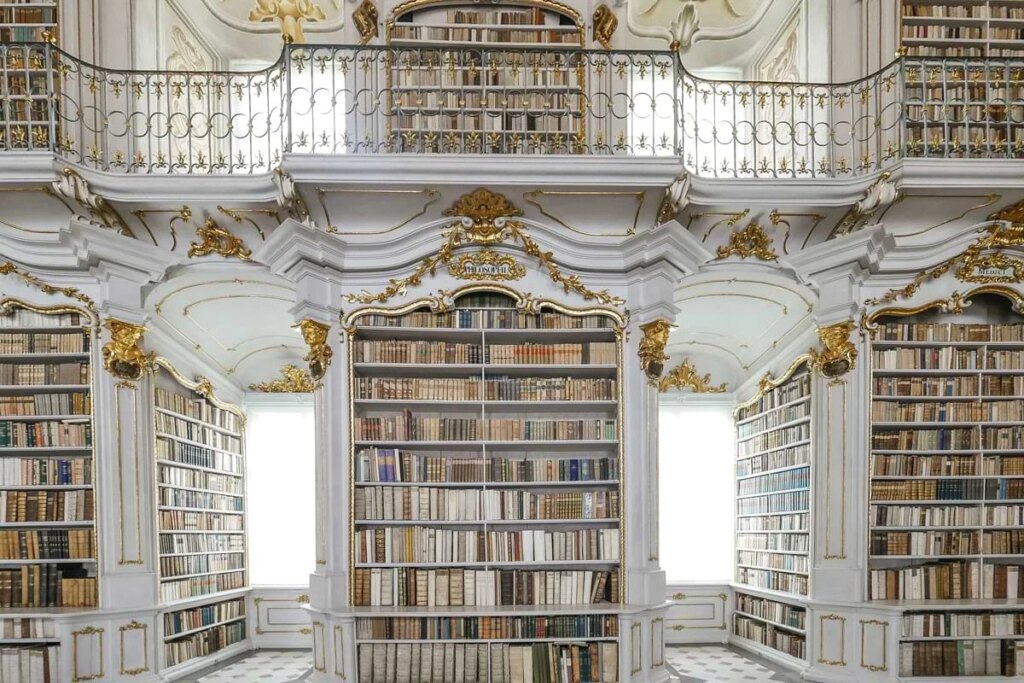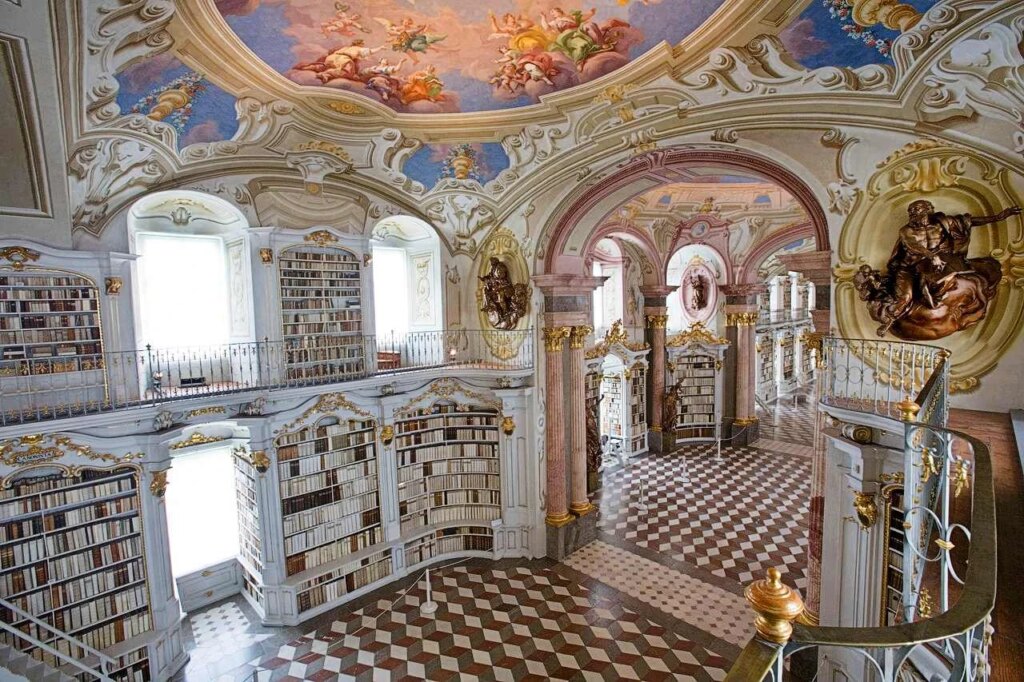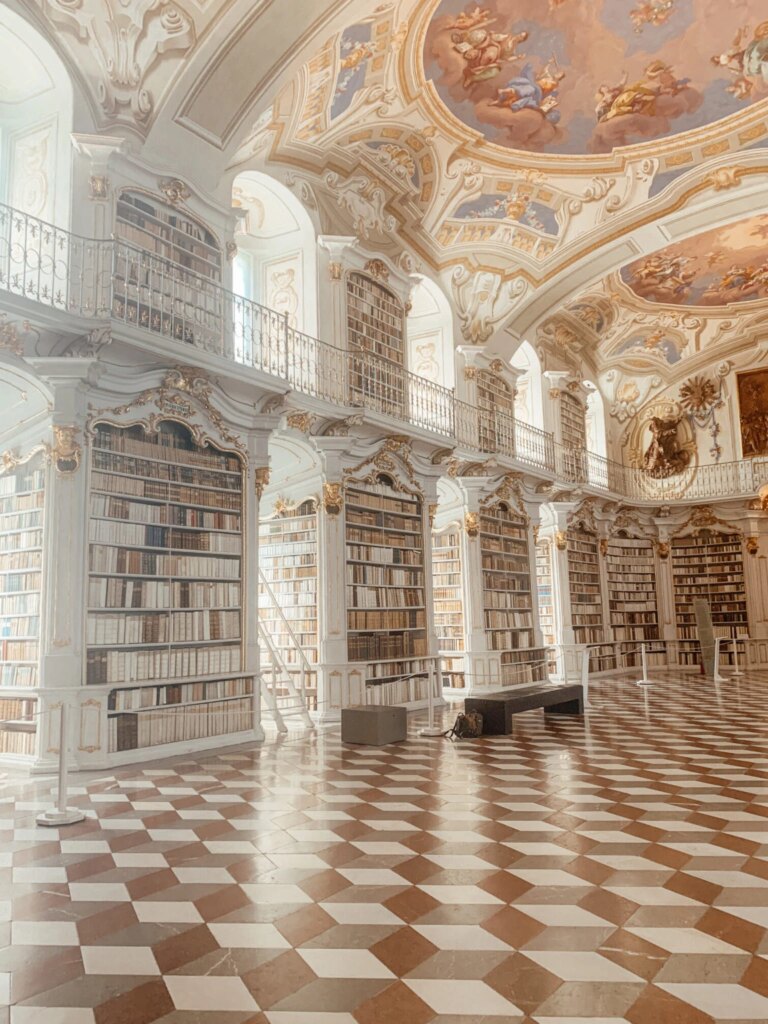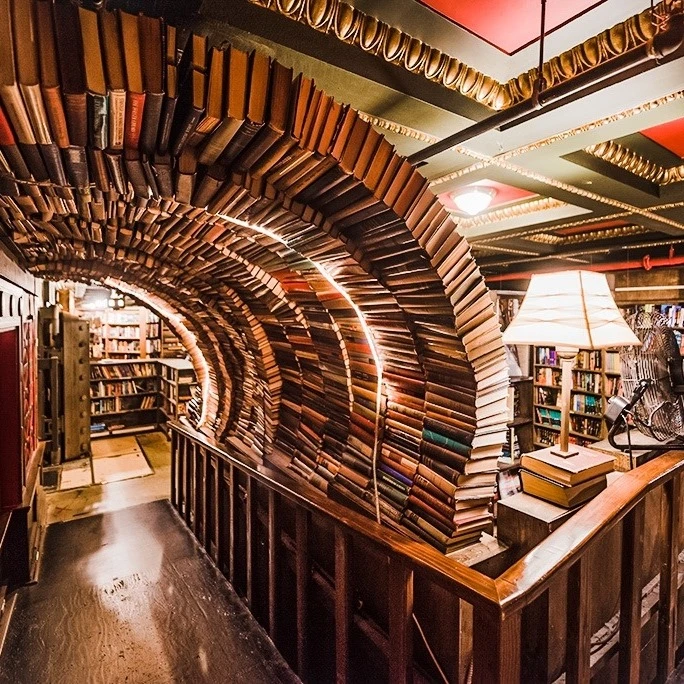This library in an Austrian monastery is everything our Disney princess hearts have ever dreamed of. You won’t believe how beautiful it is!
Tucked away in Austria, there’s a library that would make Belle jealous. Complete with frescoes, stunning architecture, bright natural light and more books than you could possibly read in a lifetime, the Admont Abbey library is truly something straight out of a fairytale.
If you want to feel like Belle in Beauty and the Beast, or you’d simply like to stare, slack-jawed, at the most beautiful library you may ever see – here’s everything you need to know.
The History of Admont Abbey Library

Admont Abbey Library, as the name may suggest, is a part of the Admont Abbey, a Benedictine monastery in the town of Admont, Austria. It is the oldest monastery in the region, and the library is the largest monastic library in the world. But that’s not all! The abbey and its library are also home to a well-established and vast scientific collection, too.
Dedicated to Saint Blaise, the monastery was founded in 1074 by Archbishop Gebhard of Salzburg. However, it was not until 1776 that the stunning Baroque Library Hall was completed. This art piece of a building was first commissioned in 1764 by Abbot Matthaus Offner, and was designed by the Austrian architect Josef Hueber. Hueber was an Enlightenment architect, and he was truly committed to the ideals of the movement.

The Enlightenment movement stood for reason as the primary source of authority, and the belief in liberty and freedom. Hueber believed in these ideals so strongly that it influenced his architectural design, he was recorded to have said “like the mind, rooms should also be filled with light”.
The artwork in the stunning library was completed over the summers of 1775 and 1776 by an 80-year-old artist, Bartolomeo Altomonte.
70,000 Books
The library is home to a whopping 70,000 volumes, which is only a fraction of the abbey’s full collection of 200,000 books. Within the collection there are more than 1,400 manuscripts from as early as the 8th century, as well as 530 incunabula; these are books printed using metal type, produced before the year 1500. The library itself is split, with theological literature in the northern side hall, and works from other fields in the southern hall.

The library is also home to thousands of parish register books from over four hundred churches in the local area. These register books have long been preserved by the monks, and have most recently been documented, photographed and digitally archived! Anyone with ancestors in Styria (central Austria) in the last four centuries could look up their families in these records.
One of the most shocking things about the Admont Library is that despite being built long before the invasion of the Nazis in Austria in 1938, it did not suffer any losses when it comes to the art, collection or history. Its doors were closed, and the monks were expelled, but nothing was lost or damaged from 1938 to 1945 when the doors were reopened.
Decor Like No Other
But, of course, with a library like this, it’s about more than just the books. The Admont Abbey Library is made up of one long corridor that consists of seven consecutive rooms. Each of these rooms is topped with a dome that is diligently decorated with a stunning fresco. The frescoes, painted by Bartolomeo Altomonte, tackle themes relating to the illumination of the human mind, leading to, ultimately, Enlightenment. The center dome represents this moment, the Divine Revelation.

In addition to the frescoes, there are also our decorative pillars which hold up the central dome. These pillars have bronze statues on them. Each statue represents one of the Four Last Things: Heaven, Hell, Death and Judgement. These statues were built before the frescoes were painted, by Baroque artist Josef Stammel.
Stammel is also responsible for the large art pieces on the south side and north side of the library hall. One of these depicts the Solomonic Judgement from the Old Testament, and the other depicts Jesus teaching in the temple. There are further pieces by Stammel on the upper floor: four women to represent prudence, science, eternal truth and divine wisdom.

The library has often been referred to as the eighth wonder of the world, and it’s no surprise. The building is completely stunning. Its architecture alone is enough to stare at, let alone everything else. But perhaps the most wonderful addition to the library, especially for those who love all things mysterious, are the notorious ‘secret doors’ that are dotted around the library, hidden in plain sight and accessed through imitation book spines.
Going to Visit
Those who wish to visit the fairytale library can book online. The library is open from March to December every year, opening at 10:30 AM Wednesday to Sunday in the off-peak months and 10 AM every day in the summer. To find out more about the library and how to get your own fairytale library experience, check out their website.
@carinne67 It was like walking into a fairytale! #admontabbeylibrary #austria
♬ original sound – lost words society
Join our community of 1.5M readers
Like this story? You'll love our free weekly magazine.








